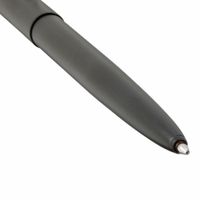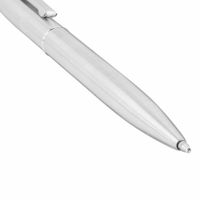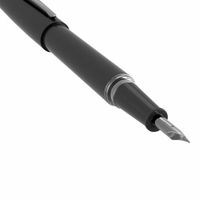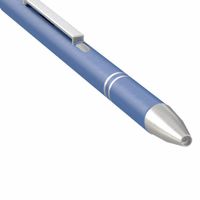Call +(254) 703 030 000 / 751 483 999 / 721 704 777
.....Read More
Frequently Asked Questions
What is the best pen for writing on checks?
The best pen for writing on checks is one that offers permanence, precision, and security. A gel pen with archival-quality ink is highly recommended. These pens use pigmented ink that is water-resistant and fade-resistant, ensuring that the writing remains legible over time.
The Uni-ball 207 is a popular choice due to its fraud-resistant ink, which is designed to prevent check washing—a common form of check fraud where ink is removed and altered. The ink in the Uni-ball 207 bonds with the paper fibers, making it difficult to alter without damaging the check.
Another excellent option is the Pilot G2 gel pen. It provides smooth writing and quick-drying ink, reducing the risk of smudging. The fine tip allows for precise writing, which is essential for filling out checks accurately.
For those who prefer a ballpoint pen, the Bic Cristal is a reliable choice. It uses oil-based ink that is less prone to smudging and is water-resistant. While it may not offer the same level of fraud protection as gel pens, it is still a dependable option for everyday use.
When selecting a pen for writing checks, consider the following factors: ink permanence, smoothness of writing, and tip size for precision. Gel pens generally offer superior security features, while ballpoint pens provide durability and ease of use. Choose a pen that balances these attributes according to your specific needs.
How do metal detectable pens work?
Metal detectable pens are designed for use in environments where contamination by foreign objects is a concern, such as in food processing, pharmaceuticals, and other sensitive industries. These pens are made from materials that contain metal particles, allowing them to be detected by metal detectors used in these facilities.
The key component of metal detectable pens is the special plastic or composite material used in their construction. This material is infused with metal particles, typically stainless steel or other ferrous metals, which are evenly distributed throughout the pen's body. The presence of these metal particles ensures that even small fragments of the pen can be detected by standard metal detection systems.
When a metal detectable pen is accidentally broken or lost in a production area, any fragments can be quickly identified and removed by the metal detectors. This helps prevent contamination of the product and ensures compliance with safety and quality standards.
Additionally, many metal detectable pens are designed to be highly visible, often in bright colors, to facilitate easy identification and retrieval. They are also typically made to be durable and resistant to breaking, further minimizing the risk of contamination.
Overall, metal detectable pens are an essential tool in maintaining product safety and integrity in industries where contamination by foreign objects could pose significant risks.
What are cleanroom pens used for?
Cleanroom pens are specialized writing instruments designed for use in controlled environments where contamination must be minimized, such as in semiconductor manufacturing, pharmaceuticals, biotechnology, and aerospace industries. These pens are engineered to prevent the release of particles, fibers, and other contaminants that could compromise the integrity of sensitive processes or products.
Key features of cleanroom pens include:
1. **Low Particle Emission**: They are constructed from materials that do not shed particles, ensuring that the writing process does not introduce contaminants into the cleanroom environment.
2. **Non-Toxic Inks**: The inks used in cleanroom pens are typically non-toxic and low in volatile organic compounds (VOCs), reducing the risk of chemical contamination.
3. **Durable Construction**: These pens are often made from materials like polypropylene or other plastics that resist degradation and do not produce particulates.
4. **Sterilization Compatibility**: Many cleanroom pens can withstand sterilization processes, such as autoclaving or gamma irradiation, ensuring they remain free from microbial contamination.
5. **Ergonomic Design**: They are designed for comfortable use over extended periods, which is important for workers who need to document processes or data continuously.
6. **Traceability**: Some cleanroom pens come with features that allow for traceability, such as lot numbers or batch codes, which is crucial for maintaining quality control and compliance with industry standards.
In summary, cleanroom pens are essential tools in environments where maintaining cleanliness and preventing contamination are critical. They enable precise documentation and communication without compromising the stringent cleanliness standards required in these specialized settings.
Can all-weather pens write in wet conditions?
All-weather pens are specifically designed to function in various challenging conditions, including wet environments. These pens typically use a special ink formula that is waterproof and can adhere to wet surfaces, allowing them to write effectively even when exposed to rain, snow, or other moisture. The ink is often a gel-based or pressurized type, which prevents it from washing away or smudging when it comes into contact with water.
The construction of all-weather pens also contributes to their performance in wet conditions. They often feature a sealed and pressurized ink cartridge, which ensures a consistent ink flow regardless of the angle at which the pen is held. This design prevents the ink from being diluted or disrupted by water, maintaining legibility and durability of the writing.
Moreover, the materials used in the pen's body are typically resistant to corrosion and water damage, ensuring that the pen remains functional even after prolonged exposure to moisture. The tips of these pens are usually made from durable materials that can write smoothly on wet paper or other surfaces without tearing or skipping.
In summary, all-weather pens are engineered to write reliably in wet conditions due to their waterproof ink, pressurized cartridges, and robust construction. They are ideal for outdoor use, particularly for professionals like surveyors, military personnel, and outdoor enthusiasts who need to document information in adverse weather.
How do security pens detect counterfeit money?
Security pens, also known as counterfeit detection pens, are designed to identify counterfeit currency by reacting with the paper on which the money is printed. Genuine currency paper is made from a special blend of cotton and linen fibers, which is different from the standard wood-based paper used in most counterfeit bills.
When a security pen is used, it deposits a solution, typically iodine-based, onto the bill. If the bill is genuine, the solution remains colorless or turns a light amber color because the fibers in real currency do not react with iodine. However, if the bill is counterfeit and made from regular paper, the iodine reacts with the starch present in the wood-based paper, causing a dark brown or black mark to appear.
This method is quick and easy, making it a popular choice for businesses and individuals to verify the authenticity of currency. However, it is not foolproof. Some counterfeiters use starch-free paper or chemically treat the paper to avoid detection by security pens. Additionally, the pen cannot detect counterfeit bills made from bleached genuine currency paper, where the original print is removed and reprinted with higher denominations.
Despite these limitations, security pens are a useful first line of defense against counterfeit money, especially when combined with other detection methods such as checking for watermarks, security threads, and color-shifting ink.
What is the difference between a stylus pen and a regular pen?
A stylus pen and a regular pen serve different purposes and have distinct features.
A regular pen is a traditional writing instrument used for applying ink to paper. It consists of a barrel, ink reservoir, and a tip, which can be a ballpoint, rollerball, fountain, or gel. Regular pens are used for writing, drawing, or signing documents on paper. They are simple, do not require batteries or electronic components, and are available in various colors and styles.
In contrast, a stylus pen is a tool designed for interacting with touch-sensitive screens, such as those on smartphones, tablets, or touch-enabled computers. It typically has a soft, rubbery tip that mimics the touch of a finger, allowing for precise input without leaving smudges or fingerprints. Stylus pens can be passive or active. Passive styluses do not have electronic components and rely on the device's touch sensitivity. Active styluses, however, include electronic components, such as Bluetooth connectivity, pressure sensitivity, and palm rejection, enhancing functionality for tasks like digital drawing or note-taking.
While a regular pen is limited to physical media, a stylus pen bridges the gap between traditional writing and digital interaction, offering versatility in digital art, design, and productivity applications.
Are anti-gravity pens suitable for writing in space?
Yes, anti-gravity pens, often referred to as space pens, are suitable for writing in space. These pens are designed to function in zero-gravity environments, making them ideal for use by astronauts aboard spacecraft. Unlike regular pens that rely on gravity to feed ink to the ballpoint, space pens use a pressurized ink cartridge. This allows the ink to be pushed out regardless of the pen's orientation, enabling writing in any position, including upside down or in microgravity.
The ink used in space pens is typically a special thixotropic ink that remains solid until the ballpoint mechanism agitates it, turning it into a liquid. This ensures smooth and consistent writing without the ink drying out or leaking, which is crucial in the controlled environment of a spacecraft.
Space pens are also designed to withstand extreme temperatures, from the cold of space to the heat generated by re-entry into Earth's atmosphere. This durability ensures that they function reliably throughout a mission.
The development of space pens was driven by the need for a reliable writing instrument in space, where traditional pens and pencils posed challenges such as ink flow issues and the risk of broken pencil tips or graphite dust floating in the cabin. Space pens have been used by NASA astronauts since the late 1960s and continue to be a standard tool for writing in space missions.
In summary, anti-gravity pens are highly suitable for writing in space due to their pressurized ink system, ability to write in any orientation, and durability in extreme conditions.







